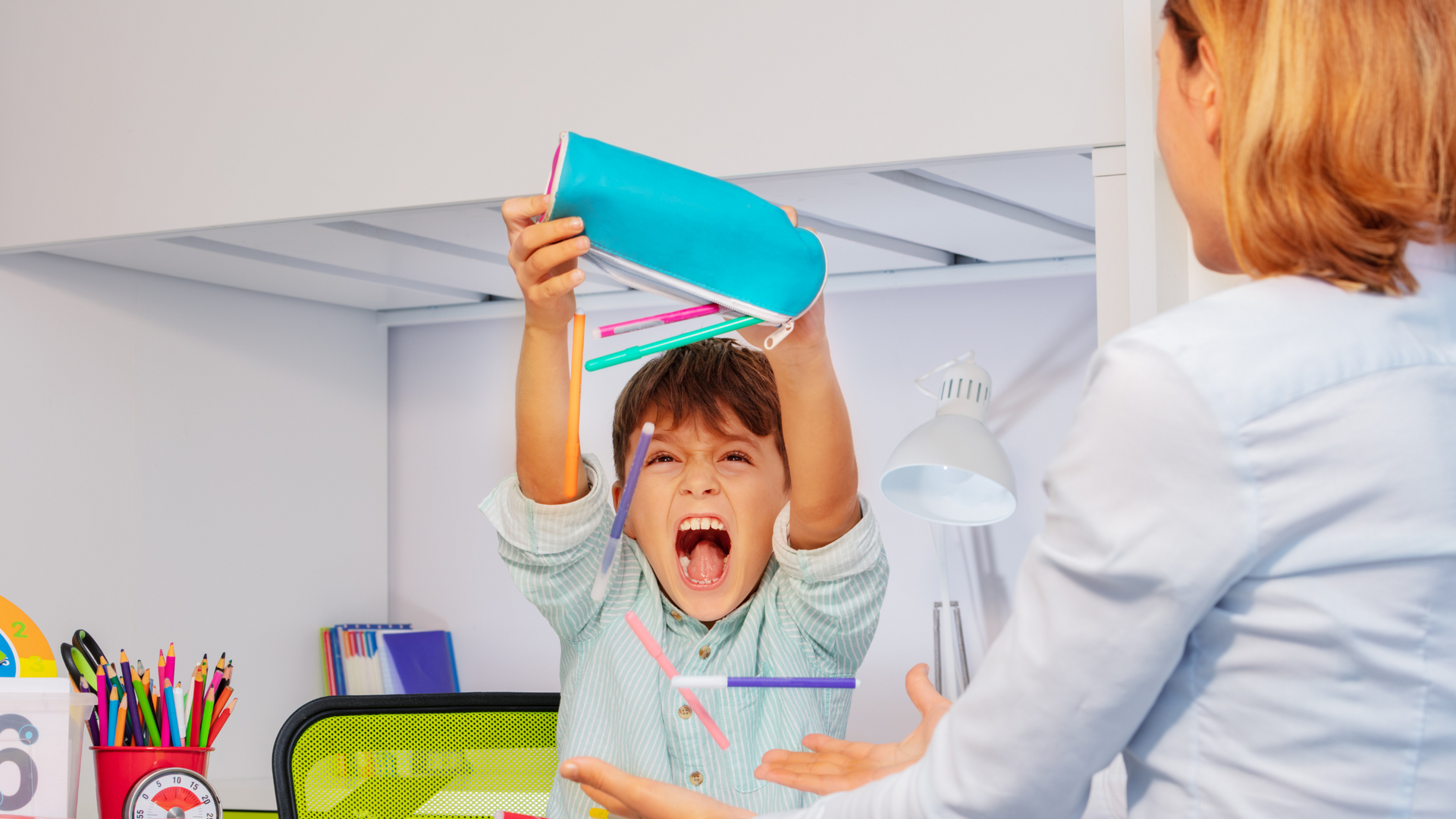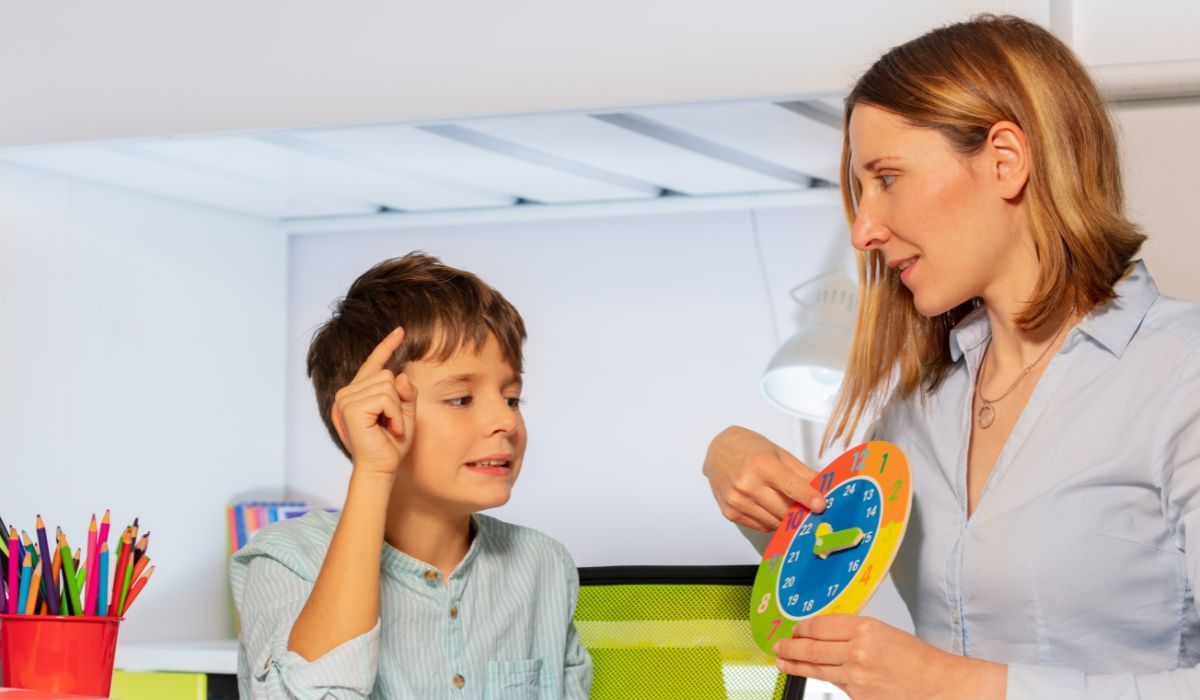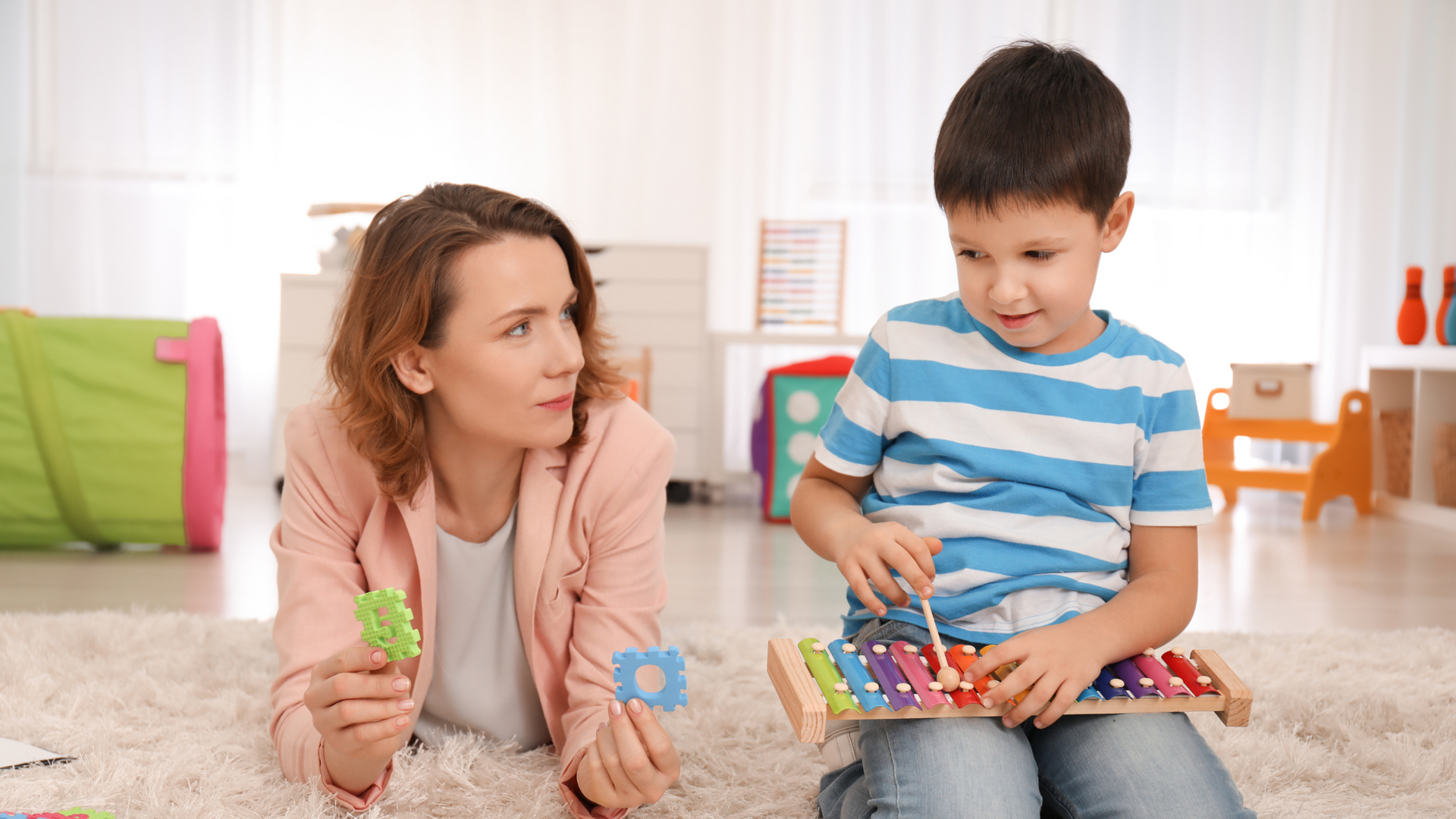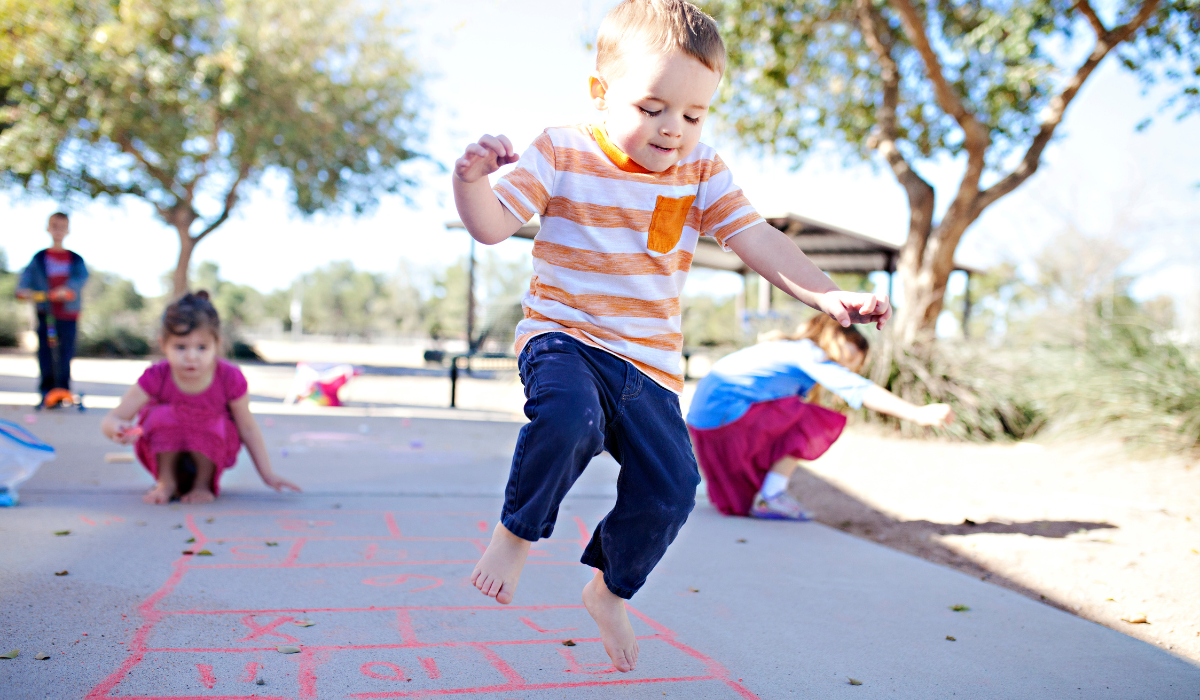When Words Won’t Come: How ABA Therapy Improves Communication
June 17, 2025
See how ABA therapy supports kids who can’t talk by helping them share what they feel and need.

Communication is at the heart of every meaningful connection we make—whether it’s a child asking for help, expressing joy, or responding to a greeting. For some children, however, communication doesn’t come easily. They may struggle to find the right words or use gestures, sounds, or behaviors to express themselves. This can be frustrating for both the child and those around them.
Applied Behavior Analysis (ABA) therapy offers a structured and effective way to support children who experience communication challenges. It is a research-based approach that helps improve skills through consistent strategies, reinforcement, and individualized goals. One of the most important areas ABA targets is communication, empowering children to share their thoughts, wants, and needs more effectively.
In this article, we’ll explore how ABA therapy helps improve communication, the techniques used, and the positive impact it can have on a child’s development and confidence.
Understanding Communication Challenges
Communication isn’t just about speaking. It includes understanding language (receptive communication), using it to express oneself (expressive communication), and knowing how to use language in social contexts (pragmatic communication). Some children may develop these skills slowly or use alternative ways to express themselves, such as pointing, making sounds, or engaging in specific behaviors to get attention or meet a need.
When words don’t come easily, it can affect learning, social development, and emotional well-being. Children may become frustrated or withdrawn, and families may feel uncertain about how to support them. That’s where ABA therapy plays a crucial role.
ABA Therapy and Communication Development
ABA therapy works by breaking down complex skills into smaller, manageable steps and reinforcing each success. For communication, this means starting with basic skills like eye contact, imitation, or requesting and building toward more advanced language and social interactions.
Here are some of the key ABA strategies used to promote communication:
1. Mand Training (Requesting)
“Mands” are requests made by the child, such as asking for water, a toy, or a break. ABA therapy encourages these functional communication skills by teaching the child to use gestures, words, signs, or communication devices to express their needs.
The therapist creates motivating situations where the child is likely to request something. For example, if a child wants a favorite snack, the therapist waits for the child to make a request and reinforces it immediately with the desired item. This builds the understanding that communication gets results.
2. Echoic Training (Imitation of Sounds or Words)
Echoic training helps children learn to repeat sounds, syllables, or words. The therapist models a sound or word and rewards the child for attempting to imitate it. This is often one of the early steps in developing spoken language.
Even if the imitation is not perfect at first, consistent practice and reinforcement improve clarity and encourage the child to continue trying. Over time, this forms the foundation for more complex language development.
3. Tact Training (Labeling)
Tacts are labels used to describe the world around us—naming objects, actions, people, or emotions. Teaching children to label helps expand their vocabulary and allows them to share experiences.
For example, during a play session, the therapist might point to a ball and prompt the child to say or sign “ball.” Success is reinforced with praise or a fun activity. Tact training also helps children learn to engage in conversation and respond to others' questions.
4. Listener Responding (Understanding and Following Directions)
Understanding language is just as important as expressing it. ABA therapists work with children on “listener responding” by teaching them to follow instructions and respond appropriately to spoken words.
Examples include “Give me the block,” “Touch your nose,” or “Come here.” These skills are built gradually, using clear instructions, prompts, and reinforcement. As children learn to understand and act on spoken language, their ability to interact with others improves.
5. Intraverbals (Conversational Skills)
Once a child can label, imitate, and request, they are ready for intraverbals—skills needed for conversation. This includes answering questions like “What’s your name?” or filling in the blank in familiar phrases, such as “Twinkle, twinkle, little ___.”
Intraverbal training helps children connect words and ideas, engage in back-and-forth conversation, and respond to social cues. It also teaches flexibility in language use, which is essential for meaningful interactions.
6. Picture Exchange Communication System (PECS)
For children who are non-speaking or have limited verbal skills, ABA therapy often incorporates PECS. This system allows them to use pictures to communicate their wants and needs.
The child learns to hand a picture to a communication partner to make a request, gradually building toward sentence structure using a series of picture cards. PECS promotes independence and reduces frustration by giving the child a reliable way to be understood.
7. Use of Augmentative and Alternative Communication (AAC)
Some children benefit from the use of AAC devices, such as speech-generating tablets or apps. ABA therapists are trained to incorporate these tools into the learning process, teaching the child how to navigate the device and use it to express themselves in real time.
By combining ABA principles with AAC tools, children gain confidence and access to a wider range of communication options.
8. Natural Environment Teaching (NET)
ABA therapy isn’t limited to a structured table setting. Natural Environment Teaching involves building communication skills during everyday activities like playing, eating, or going on a walk.
For example, during playtime, the therapist might pause and wait for the child to request a toy or label an item before giving it. This helps children apply their skills in real-world situations and encourages spontaneous communication.
9. Reinforcement and Motivation
Positive reinforcement is central to ABA therapy. When a child communicates effectively—whether through a word, sign, or gesture—they are immediately rewarded with something meaningful, like praise, a toy, or access to a favorite activity.
This not only strengthens the behavior but also motivates the child to keep trying. Over time, the child learns that communication is powerful and rewarding.
10. Generalization Across Settings
One of the goals of ABA therapy is to ensure that communication skills are not only learned but also used across different settings—at home, school, or in the community.
Therapists work closely with parents, caregivers, and teachers to create consistency in strategies and expectations. By practicing communication in a variety of environments, children become more comfortable and effective communicators.
The Role of Caregivers and Collaboration
Family involvement is essential in the success of communication development. ABA therapists often coach parents and caregivers on how to support communication goals at home. This might include using consistent prompts, setting up opportunities to request or label, and celebrating progress.
Collaborating with speech-language pathologists and educators can also enhance outcomes, especially when everyone is working toward shared communication goals. The more consistent the approach, the more likely the child is to succeed.
Benefits Beyond Communication
As communication improves, so do other areas of development. Children who can express themselves are less likely to experience frustration-based behaviors. They’re more engaged, more confident, and better able to connect with those around them.
Strong communication skills also support learning, friendships, and independence—all of which contribute to a higher quality of life.
Final Thoughts
When words don’t come naturally, it can feel like there’s a wall between a child and the world around them. ABA therapy helps take down that wall, one brick at a time, by building communication skills in ways that are personalized, meaningful, and empowering.
Whether through spoken language, gestures, pictures, or technology, every child deserves the opportunity to be heard and understood. ABA therapy opens that door, helping children find their voice and use it with confidence.
About Us
At Able Mind ABA, we are here to provide personalized and compassionate ABA therapy services tailored to your child's unique communication and developmental needs.
FAQ’s
How does ABA therapy help my child communicate better?
ABA therapy uses evidence-based strategies to build communication skills by breaking them into small, achievable steps. Therapists work on skills like requesting, labeling, and conversation using techniques such as mand training, echoic training, and reinforcement. Over time, children learn to express their wants, needs, and thoughts more clearly—whether through speech, signs, or communication tools.
Does my child need to speak in order to benefit from ABA therapy?
No, ABA therapy supports both verbal and non-verbal communication. Therapists use tools like PECS or AAC devices to help children express themselves in ways that work for them. The focus is on functional communication—helping your child be understood and connect with others effectively, regardless of whether they use words, pictures, or gestures.
What age is best to start ABA therapy for communication challenges?
ABA therapy can be beneficial at any age, but early intervention often leads to the best outcomes. Starting therapy when a child first shows signs of communication delays can help build a strong foundation for language, social interaction, and learning. However, older children can also make significant progress with the right support.
How long does it take to see improvements in communication?
Every child is different, so progress depends on individual needs and consistency of therapy. Some children show improvement in just a few weeks, while others may take months. Regular sessions, family involvement, and reinforcement at home all play a key role in helping a child build lasting communication skills.
Can ABA therapy be used alongside other therapies like speech therapy?
Yes, ABA therapy can be effectively combined with other therapies such as speech-language therapy. In fact, many families see the best results when therapists collaborate. ABA focuses on the behavioral aspects of communication—like motivation and reinforcement—while speech therapy targets language structure and pronunciation.

Choosing the right ABA therapy provider is a crucial step toward helping your child achieve greater independence, improved communication, and better social skills. In Maryland, families are fortunate to have a growing number of options for applied behavior analysis therapy , but with so many choices, it can be overwhelming to know where to begin. Whether your child has just received a diagnosis or you’re transitioning between providers, selecting the best fit means looking beyond the surface. The right provider offers not just therapy sessions—but compassionate care, individualized plans, and a team committed to your child’s long-term success. What Is Applied Behavior Analysis (ABA) Therapy? Applied behavior analysis therapy is a science-backed intervention that focuses on understanding and improving behaviors. It’s particularly effective for children who face developmental and behavioral challenges, such as autism. ABA breaks down complex skills into manageable steps and uses positive reinforcement to help children master those skills. A certified applied behavior analyst therapist develops personalized programs tailored to each child's strengths, challenges, and goals. Over time, ABA can help build critical life skills such as communication, emotional regulation, cooperation, and self-help. Why Finding the Right ABA Provider in Maryland Matters Not all ABA therapy providers offer the same level of care. In a state like Maryland—with diverse communities from Baltimore to Silver Spring to Annapolis—parents must carefully evaluate local providers based on their approach, credentials, and experience. Choosing the right partner for your child’s development ensures: Faster progress through tailored interventions Stronger collaboration between family and therapists Better preparation for school and social life Whether you're seeking applied behavioral analysis Maryland services in-home or in-clinic, quality and fit matter. Step-by-Step Guide to Choosing the Best ABA Therapy Provider in Maryland 1. Confirm Credentials and Certification The most reputable ABA therapy providers in Maryland are staffed with: Board Certified Behavior Analysts (BCBAs) – who design and oversee your child’s treatment Registered Behavior Technicians (RBTs) – who implement the therapy under BCBA supervision Always verify the provider is licensed to deliver applied behavior analysis therapy in Maryland. Check credentials through: Behavior Analyst Certification Board (BACB) Maryland Department of Health 2. Ask About Treatment Philosophy No two children are alike. That’s why effective ABA therapy is never “cookie-cutter.” Look for providers who: Conduct detailed initial assessments Develop individualized treatment plans Use data to guide decisions Adjust strategies as your child grows The best applied behavior analyst therapists focus on creating measurable, achievable goals tailored to your child’s unique needs. 3. Explore the Service Delivery Options Depending on your child’s needs and your lifestyle, you may prefer: In-home ABA therapy : Delivered in the comfort of your home for real-life skill-building Clinic-based ABA therapy : Offers structured learning environments and peer interaction School-based support : Collaborates with educators to reinforce skills during school hours Telehealth : Ideal for remote or flexible support Ask if the provider supports families throughout the state or in specific regions (e.g., Montgomery County, Prince George’s County, or Baltimore City). 4. Check Insurance Coverage and Billing Transparency Therapy can be costly, but the right provider will help you navigate: Maryland Medicaid and private insurance plans Out-of-pocket cost estimates Prior authorizations Payment plans or financial assistance A high-quality provider will also assign a care coordinator to support you with insurance paperwork and communication. 5. Learn About Staff Training and Retention Children thrive on consistency. A reliable provider invests in: Ongoing staff training Low staff turnover Regular BCBA supervision of RBTs Therapeutic consistency (same therapist assigned regularly) A committed and experienced applied behavior analyst therapist can form a meaningful bond with your child and deliver more effective results. 6. Understand Family Involvement You are an essential part of your child’s therapeutic journey. The best ABA providers offer: Weekly parent training and coaching Opportunities to observe sessions or review data Monthly progress meetings Tools to continue behavior strategies at home Providers who embrace family-centered care lead to stronger outcomes and smoother integration of skills into daily life. 7. Ask for Success Stories and References Don’t hesitate to ask: How many families they’ve served in Maryland Testimonials or references from current clients Case examples (anonymized) that match your child’s challenges Reading Google reviews, Facebook feedback, and local parenting forums can also give insight into the provider’s reputation in your community. 8. Visit the Facility or Schedule a Virtual Tour Seeing the environment where your child will receive therapy is invaluable. While there: Observe how therapists interact with children Look for clean, safe, and well-equipped spaces Ask about the ratio of children to therapists For in-home aba therapy, ask what materials and resources the therapist will bring and how sessions are structured. 9. Evaluate Their Communication and Responsiveness Strong communication is key. Your provider should: Respond promptly to inquiries Clearly explain the assessment process and therapy goals Be transparent about timelines, policies, and staff You should feel supported—not rushed—through the intake and onboarding process. 10. Trust Your Instincts Ultimately, choosing an ABA therapy provider is a personal decision. If you feel that a provider listens to your concerns, understands your goals, and truly cares about your child’s progress, that’s a strong sign you’re in the right place. Leading Providers Offering Applied Behavioral Analysis in Maryland Some trusted names to begin your search include: Able Minds ABA – A provider offering applied behavior analysis therapy across Maryland with flexible in-home services and experienced clinicians. Behavioral Framework Verbal Beginnings Key Connections ABA Services Each of these organizations provides certified applied behavior analyst therapists and offers individualized programs designed for success. Final Thoughts Choosing the best ABA therapy provider in Maryland doesn’t have to feel overwhelming. When you understand what to look for—from credentials and personalized care to communication and insurance support—you can find a team that fits your family’s needs and empowers your child to thrive. By investing in quality applied behavioral analysis Maryland services, you’re laying the foundation for a brighter, more independent future for your child.









